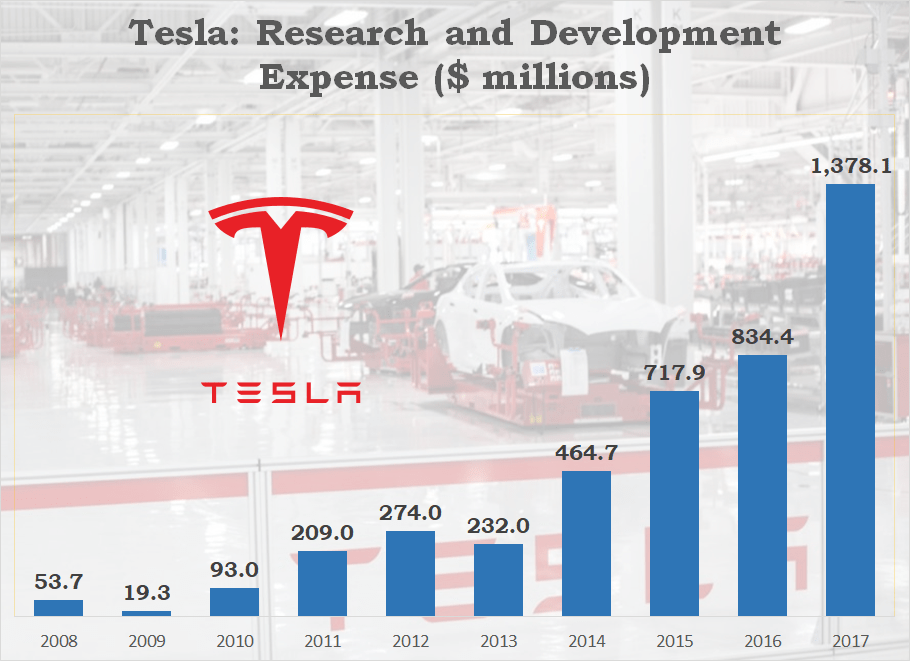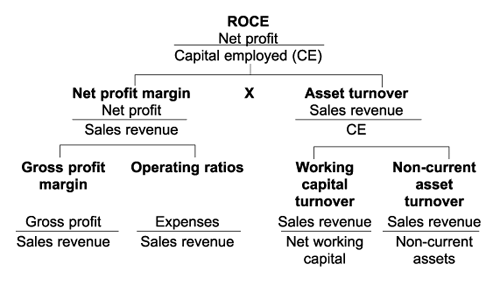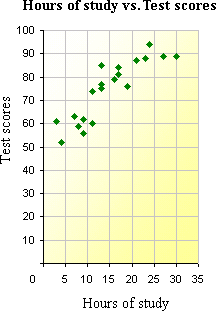
At the incredibly affordable price point we offer, your business will gain access to valuable inventory tools that often cost tens of thousands of dollars from the larger ERP systems. If you are still working on spreadsheets, you will Reorder points determine each product’s reorder point manually. To explore all the advantages a warehouse management system can offer your installation, get in touch — we’ll provide you with a detailed demo on the functionalities of our Easy WMS.
To protect profits, businesses can use the most optimal reorder levels to keep storage and warehousing costs low. Using inventory reorder points as part of your inventory management strategy also helps you keep your distribution costs low. Some businesses who run their operations from multiple warehouses use the location of their warehouses as a strategy for cost savings. While businesses have an official lead time from suppliers in their service level agreements, the exact number can vary from time to time. If their SLA says 5 days, they more often than not deliver within 2 days.

Not only can it help automate your reorder process, but it will ensure the numbers you base your strategy on are more accurate. Software also improves your efficiency and removes the chance for error, so your business can quickly adjust to changes in market conditions. But this comes at a risk – if any of your formulas are wrong, so will your reorder point calculations. Neglected inventory management leads to a decrease in customer loyalty, in addition to lost sales. Negative reviews can quickly erode any positive online presence you’ve built. For Supplier B, your reorder point will be higher because you need to account for more days of stock between your order and when new stock arrives.
You’re our first priority.Every time.
For example, Katana lets you set reorder points and highlights when you need to order more materials to keep ideal inventory levels. You cannot assess the quality of the reorder point for a single SKU by looking at a single point in time. Unless your service level is very close to 50%, the pinball loss has a strong variance. As a result, you need to average the loss values over several dozens of distinct dates to obtain a reliable estimate when looking at a single SKU. However, in practice, we suggest instead to average losses over many SKUs (rather than many dates). With an dataset containing more than 200 SKUs, the pinball loss is typically a fairly stable indicator, even if you only consider a single point in time to perform the benchmark.
The Blacker the Berry – TheTyee.ca
The Blacker the Berry.
Posted: Fri, 18 Aug 2023 03:46:38 GMT [source]
Suppose we have a supplier that has been delivering this item to us, on average, in 14 days. However, over the last year, there have been deliveries of this item that have taken as much as 25 days to reach us. In the scenario on the screen, this company starts with 10 weeks of inventory and as the weeks go by, the inventory is slowly depleted.
Calculating Reorder Points Are An Inventory Management Best Practice
It also costs employees time to receive, organize and stock unnecessary products. We put together a video to help you gain a better understanding of how you can use Finale cloud inventory management software to supplement your reorder point system. In the video, you’ll see how to use Finale Inventory to schedule reorder points that trigger our system to reorder stock for you. The reorder point — sometimes known as the reorder level — is an essential piece of information for every retailer and supplier.
- In the above graph, the maximum level is the sum of the safety stock and the order quantity, or 3400 bottles.
- Next, a reorder point must take into account a supplier’s lead time, or the amount of time it takes for an ordered shipment to arrive.
- ROP stands for reorder point, which tells a business when to place an order (where the “when” is given in terms of current inventory levels).
- Reorder points and quantities are two key metrics that determine when and how much to order new inventory.
If the demand goes above this threshold, an event that occurs only with a 1-τ frequency, then a stock-out is hit. By using the reorder point to purchase replacement stock in a timely manner, a business minimizes the risk of having no stock on hand when customers place orders. This means that the firm will not lose any sales due to stock-out conditions. As we explained, you determine reorder points by multiplying your daily sales velocity by shipment lead time, and adding in any safety stock. If you notice a change in sales velocity or lead time, it’s time to set new reorder points. Reorder points are a valuable tool for making sure you have sufficient inventory on hand for your customers without having so much inventory that it becomes costly and unmanageable.
Reorder point sample calculation
The ultimate goal of reorder point is to maintain an amount of inventory at a level that can always meet customer demand without having more than is realistically possible to move. Your reorder point should include enough stock to last on-hand until the delivery of new stock arrives. Small businesses can use the reorder point formula to calculate when items need to be replenished before their inventory levels hit zero. Using this inventory management tool can help avoid an unwanted out-of-stock message for your customers, which can often be disruptive to their shopping experience. We’ll keep things simple by calculating based on two weeks of extra demand (14 days).
Reorder point calculationensures that you don’t fall behind on your next batch of inventory. With an accurate reorder point for each SKU, you’ll always have enough stock on hand to satisfy customer demand — without tying up excess capital in inventory. Some businesses include other inputs, such as the standard deviations of sales velocity and lead time. Adding such fancy math is useful when using more complex models and assumptions, which are often best for situations where sales and lead times vary quite a bit. But the three variables above form the core of almost every ROP calculation. In the real world, businesses aim to place bulk orders in advance of when those orders will be needed.
Average delivery lead time is the time it usually takes for product shipments to arrive. You should have a couple of purchase orders on-hand to check the numbers. Delivery times can vary based on your order quantity (larger orders could take longer to ship).
Last-minute rush orders might be so rare, and expensive to plan for, that they’re not worth considering. Most businesses won’t want to ignore the need for safety stock (or at least the logic behind it), but there are valid and useful cases of reorder points that omit safety stock. But the concept is not limited to businesses that buy inventory for resale (e.g., buying at wholesale prices and selling at retail). The zero safety stock model is a very risky way to plan inventory since variations in demand and supplier delivery times happen every day and this makes our calculations merely estimates. All it takes is one delay in a delivery or one retailer running a promotion of your product for you to run out of inventory before the next shipment arrives from your supplier. Your safety stock acts as a buffer in these situations to keep you from completely running out of an item.
In another scenario, you may notice that every week you’re overflowing with one set of products that become damaged or spoiled while consistently running out of another that you need to do stock replenishment. The manufacturer should hold 132 safety stock units to avoid bottlenecks in production. Holding too much inventory ties up capital and eats into business profits with increased carrying costs. At the same time, not enough stock causes slow order fulfillment, the potential for missed sales, and lost revenue.
How to calculate your reorder point
For raw materials or finished goods incoming from suppliers via purchase orders, lead time is usually referred to as delivery or material lead time. For items or sub-assemblies that are manufactured in-house, lead time is referred to as factory or production lead time. A reorder point, or ROP indicates an inventory item’s minimum stock level at which new stock should be ordered in order to avoid a stockout. In other words, the reorder point is the lowest number of units of an SKU that a company needs to have in stock to make sure it can keep fulfilling orders. It can thus also be viewed as the last time to replenish stock to avoid a stockout. Calculating ROP for each product can be time-consuming and challenging, especially if your inventory is patched together from several suppliers or you sell lots of products.
- When establishing a reorder point, you want to avoid repeatedly pulling from your safety stock.
- Reorder points and safety stock levels are useful calculations to better manage your inventory, but sometimes access to the right data may force you to use an approximation for some of the values.
- If you’re a business owner, knowing when to order more stock is important.
- Reorder points also help you avoid an equally costly alternative — overstocking.
- These forecasts come closer to reality, but they involve more complex calculations.
- This means that the firm will not lose any sales due to stock-out conditions.
To maintain an accurate reorder point, check the underlying metrics — average daily sales/usage and average lead time — at least once per quarter. If you have a high season and low season, or seasonal bad weather that slows down deliveries, factor this in. The average lead time in days is how long it takes for your raw materials to be delivered from a supplier or how long it takes you to manufacture a product.
With those numbers stored, let’s focus on maximum daily sales and maximum lead time. Poor inventory management can quickly become an expensive issue as storing excess stock levels will eat into your margins. It also ties up your cash in unsold inventory, which means you have less overall liquidity. And if you’re working with items that depreciate – food or a trending item – they’ll start losing value. Successful e-commerce entrepreneurs know that inventory management can make or break the business. Too much inventory ties up necessary capital needed for other business operations.
With this, it becomes possible to benchmark alternative stock strategies with your current practice. If an alternative strategy reduces the overall error, then it means that this strategy is better for your company. Since the reorder point is nothing but a quantile forecast, it is possible to evaluate the accuracy of this forecast through the use of the pinball loss function. In practice, the reorder point error (see section below) is typically reduced by more than 20% if any one of those three condition is satisfied.
Reorder point (ROP) is a supply chain management technique that businesses can use to guide this delicate balancing act to improve inventory operations, avoid stockouts, and maintain ideal inventory levels. It’s important to learn how to calculate reorder points because as your business grows and handles more products and SKUs, the more difficult it’s going to be to maintain your ideal stock levels. This article looks into the reorder point formula, safety stock, and how to calculate it all.

In the above graph, the demand rate of an item is represented by the stock level’s (green line) angle. It’s rare that a company will calculate reorder points without any safety-stock factor or acknowledgment of any of the issues a safety stock addresses. You may also be selling products that are ordered very far in advance — maybe you sell to big conferences that plan years ahead of time, or to people planning weddings a year in advance.
You source the shirt from Supplier B, who has a typical lead time of 7 days. When establishing a reorder point, you want to avoid repeatedly pulling from your safety stock. Even if you eventually run through your safety stock, having that buffer can extend your sales beyond that of a competitor. Each point-of-sale, or POS, system uses reorder points in a different way. For example, some will calculate reorder points for you automatically, while others use the reorder points you enter to help automate the reordering process.
